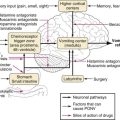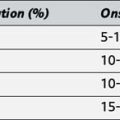Chronic pain is a multifaceted condition that impacts millions of individuals across the globe. From back pain to fibromyalgia, arthritis, and migraines, the persistence of pain can significantly impact your physical, emotional, and psychological well-being. One of the most important factors that can influence chronic pain is anxiety. Research has shown that anxiety can intensify pain perception, making it harder for those suffering from chronic pain to manage their symptoms effectively. In this article, we’ll explore how anxiety-free living can be a game-changer when it comes to managing chronic pain and how to incorporate techniques to break the cycle of pain and anxiety.
The Link Between Anxiety and Chronic Pain
Living with chronic pain can feel isolating, overwhelming, and draining.The constant discomfort can create a sense of helplessness, which in turn can lead to increased stress and anxiety. This anxiety often exacerbates the perception of pain, creating a vicious cycle: the more anxious you become about the pain, the worse the pain seems to get.
This connection between anxiety and chronic pain isn’t just anecdotal—it’s backed by science. According to numerous studies, when anxiety levels rise, the body’s stress response (the fight-or-flight system) is activated, releasing hormones like cortisol that heighten sensitivity to pain. Anxiety can also lead to muscle tension, poor sleep, and fatigue, all of which can make chronic pain feel even more intense.
Additionally, chronic pain itself can cause anxiety due to the uncertainty about the future and the inability to predict or control flare-ups. The fear of worsening pain can cause individuals to avoid activities, leading to further isolation, depression, and physical deconditioning.
How Anxiety-Free Living Can Help Manage Chronic Pain
Living anxiety-free doesn’t mean eliminating pain altogether, but it can dramatically improve your ability to cope with and manage it. By addressing the underlying anxiety, individuals can lower their pain levels and improve their quality of life. Here’s how anxiety-free living helps manage chronic pain:
1. Reduces Stress and Tension
Stress is one of the most common triggers for chronic pain flare-ups. When you’re anxious, your body remains in a heightened state of tension, causing your muscles to contract. This muscle tightness can increase pain, especially for conditions like back pain, fibromyalgia, or migraines. By learning how to manage anxiety, you can reduce muscle tension and alleviate stress, which in turn helps reduce pain levels.
2. Improves Sleep
Chronic pain can often interfere with sleep, and poor sleep can exacerbate both anxiety and pain. Insomnia caused by anxiety can leave you feeling physically and mentally drained, making it harder to cope with the demands of daily life. On the other hand, achieving anxiety-free living through relaxation techniques and stress management practices can significantly improve your sleep quality. Better sleep means improved pain management and an overall reduction in feelings of anxiety.
3. Enhances Pain Perception Control
One of the most powerful benefits of reducing anxiety is the ability to change how your brain perceives pain. Research has shown that cognitive-behavioral techniques and mindfulness-based therapies can train your brain to view pain less negatively. Instead of fearing the pain or interpreting it as a sign of something worse, you can learn to accept it without allowing it to control your emotional state. This shift in mindset can make the pain feel more manageable and less overwhelming.
4. Promotes Physical Relaxation and Mobility
Anxiety often causes individuals to stiffen up and limit movement due to the fear of triggering pain. When anxiety is addressed, people often feel more confident in moving their bodies, leading to improved mobility. This can be particularly important for individuals with conditions like arthritis, where joint stiffness and limited movement are common. Engaging in gentle exercises, like yoga or walking, can help improve flexibility, strength, and reduce the intensity of chronic pain.
Practical Techniques for Anxiety-Free Living
To truly benefit from an anxiety-free approach to chronic pain, it’s essential to incorporate various relaxation and stress-reduction techniques into your daily routine. Below are some effective practices for managing anxiety and improving your ability to cope with chronic pain:
1. Mindfulness Meditation
Mindfulness meditation encourages you to be present in the moment, focusing on your breath and bodily sensations without judgment. This practice can help reduce stress, lower anxiety, and improve your emotional response to pain. By accepting pain as a part of your experience and not something to fear, you can change your relationship with it.
Studies have shown that mindfulness meditation can significantly reduce chronic pain intensity and improve overall well-being. Starting with just 10-15 minutes a day can lead to noticeable improvements in both anxiety and pain levels.
2. Deep Breathing Exercises
Deep breathing exercises, such as diaphragmatic breathing or the 4-7-8 technique, can help activate the parasympathetic nervous system, which promotes relaxation. This counters the body’s natural stress response and helps lower cortisol levels, reducing both anxiety and pain. Deep breathing can be practiced anywhere and is an excellent tool for managing moments of acute pain or anxiety.
3. Cognitive Behavioral Therapy (CBT)
Cognitive Behavioral Therapy (CBT) is a type of talk therapy that helps individuals identify and challenge negative thought patterns. This therapy is particularly useful for chronic pain sufferers, as it addresses the mental and emotional factors that contribute to both pain and anxiety. CBT teaches coping strategies that allow individuals to reframe their thoughts about pain, reducing the emotional impact it has on their lives.
4. Progressive Muscle Relaxation (PMR)
Progressive Muscle Relaxation (PMR) is a technique that involves sequentially tightening and releasing various muscle groups throughout the body. This technique helps reduce muscle tension, lower anxiety, and promote a sense of physical and mental relaxation. By practicing PMR regularly, you can improve your body’s response to pain and prevent the buildup of tension that may aggravate chronic pain.
5. Physical Activity and Exercise
Exercise is a powerful tool for managing both anxiety and chronic pain. Regular physical activity triggers the release of endorphins in your body, which are natural painkillers and mood boosters. For those with chronic pain, low-impact exercises like swimming, walking, or yoga can improve joint mobility, reduce inflammation, and decrease anxiety.
Even just 20 minutes of exercise a few times a week can help alleviate both anxiety and pain. It also promotes better sleep and increases your overall sense of well-being.
6. Diet and Nutrition
A healthy diet is an often-overlooked factor in managing anxiety and chronic pain. Certain foods, like those rich in omega-3 fatty acids, antioxidants, and magnesium, can help reduce inflammation and support nervous system health. A balanced diet can also improve mood and energy levels, making it easier to deal with the challenges of chronic pain.
7. Supplements and Medication (Under Professional Supervision)
In some cases, medication may be necessary to manage both anxiety and chronic pain. Medications like Alprazolam, commonly prescribed for anxiety, can help reduce anxious feelings in the short term. On the other hand, pain medications like Tramadol may be used under medical supervision for more severe pain episodes.
However, it’s crucial to consult a healthcare provider before using any medication to ensure it’s appropriate for your condition and won’t interact with other treatments.
If you’re considering any new treatments or medications, including deciding whether to buy Tramadol or use other forms of pain management, always consult with a healthcare professional first to ensure safe and effective treatment options.
The Role of Professional Support in Managing Pain and Anxiety
While self-management techniques are essential, it’s also important to seek professional help when needed. Pain specialists, mental health therapists, and physical therapists can provide personalized care that addresses both anxiety and chronic pain. These professionals can help guide you through treatment options, offer strategies for managing symptoms, and provide emotional support as you work toward an anxiety-free lifestyle.
Conclusion
Anxiety-free living plays a crucial role in managing chronic pain. By reducing anxiety, you can lower pain perception, reduce stress, and improve your quality of life. Incorporating relaxation techniques, therapy, physical activity, and mindfulness practices into your routine can help break the cycle of pain and anxiety. If necessary, medication, including options like Alprazolam and Tramadol, may provide relief, but these should always be used under professional guidance.
Living with chronic pain doesn’t mean you have to live with anxiety. Through consistent practice and professional support, you can regain control over your body and mind, achieving a more balanced, pain-free life.





